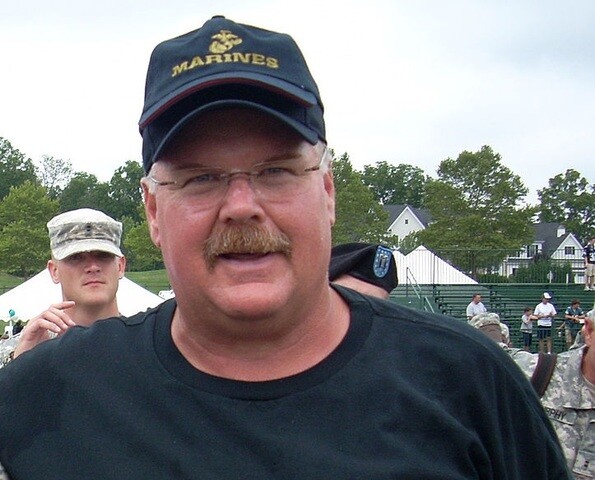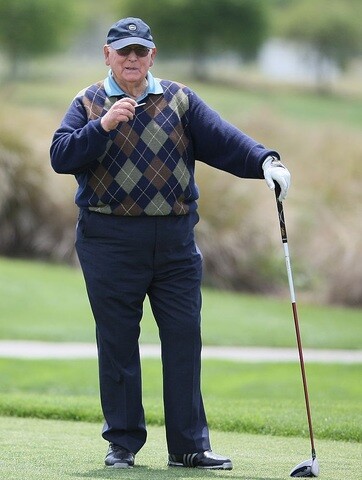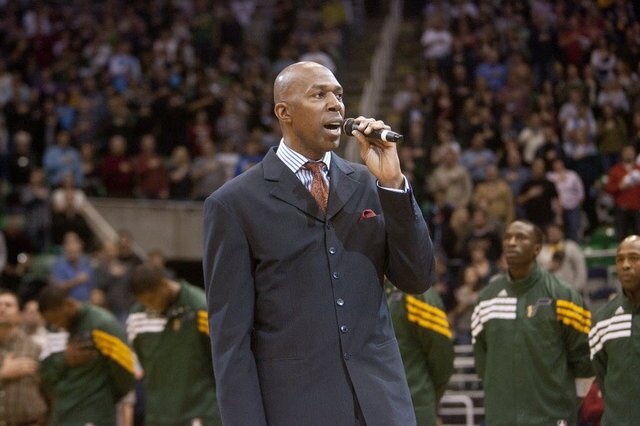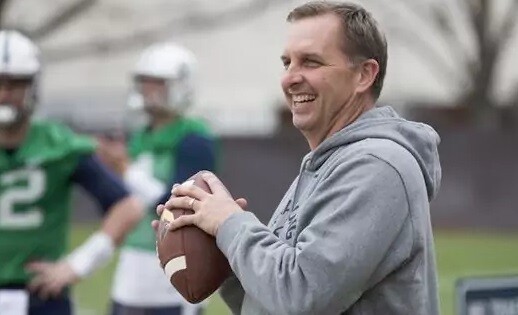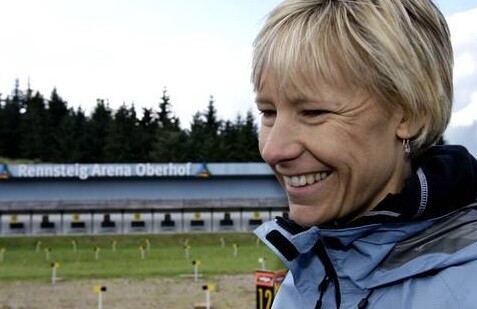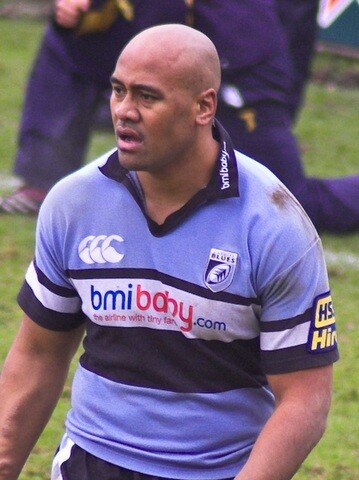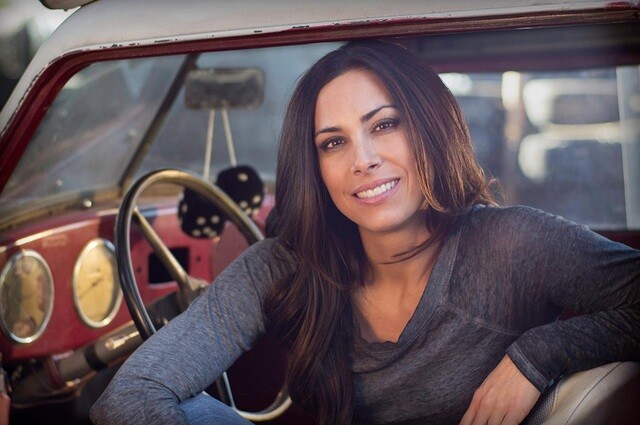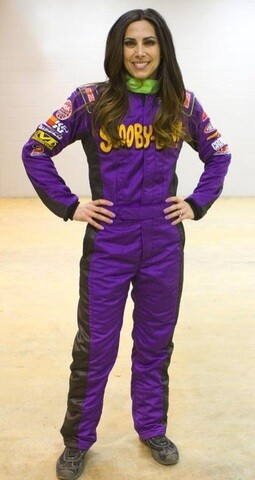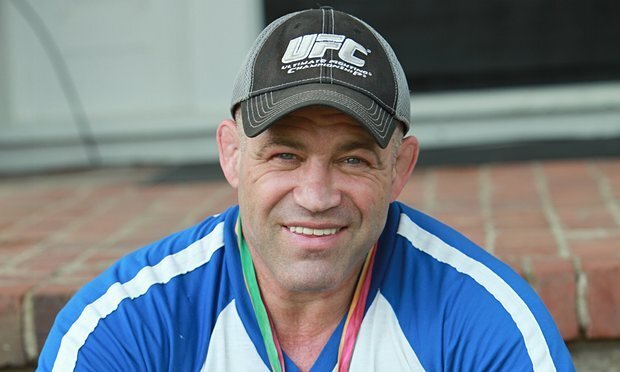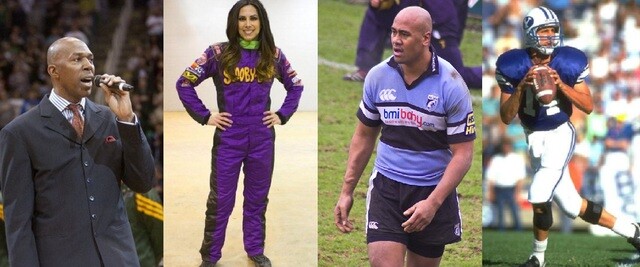From monster truck driving to the Olympics and the NFL to the NBA, many famous athletes have found the gospel and discovered the fullness it brings to their lives. Here are just a few remarkable stories of athletes who have converted to the Church.
Thurl Lee Bailey
Looking at Thurl Bailey, you would probably assume he played some basketball. But few people would guess this 7-foot former NBA player is also a Latter-day Saint who published a CD of inspiring music and hymns.
Growing up in a high-crime neighborhood in Washington, D.C., Bailey’s childhood was strongly influenced by the Civil Rights movement. In fact, both of his parents attended Martin Luther King Jr.'s "I Have a Dream" speech at the Washington Monument. And though his family didn’t attend church regularly, Bailey says in an interview with Mormon Channel that his upbringing gave him a "very good spiritual foundation."
At 14 years old, Bailey saw Julius “Dr. J” Erving dominating the basketball court on TV. That was the moment Bailey knew he wanted to become a professional basketball player.
In the 1983 NBA draft, the Utah Jazz selected Bailey as the seventh pick, kicking off his 16-year career in professional basketball. That pick proved fateful in Bailey’s life, paving the way for his conversion to the Church.
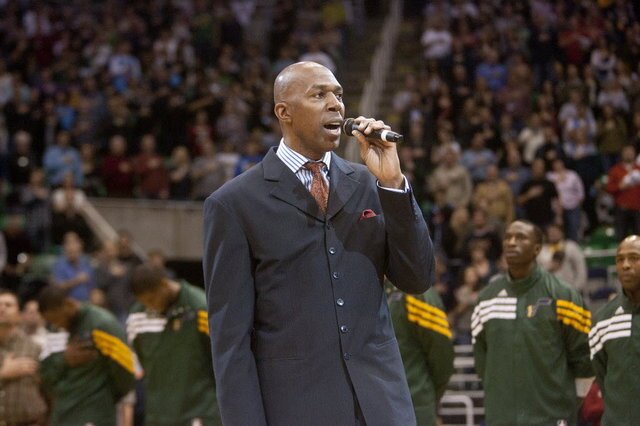
Image from The Oregonian
During his time playing with the Utah Jazz, Bailey married Sindi Southwick, a Latter-day Saint collegiate basketball player. Though he respected her beliefs, Bailey did not join the Church until nearly a decade later.
But, as an athlete in Utah, Bailey got regular exposure to Latter-day Saint culture and beliefs during those years, receiving “around 70 copies of the Book of Mormon” from well-meaning fans. "It was a totally different culture," he says in his interview with the MormonChannel. "People were very nice to me, not just because I played for the Jazz, but because they're truly genuine, kind, service-oriented people."
When Bailey decided to play for the Italian Basketball League (LBA) in 1995, he suddenly found himself in a whole new country and culture. "Times were tough," he says. "I was a captive audience, and my Father in Heaven knew it."
But it was those difficult moments that prompted Bailey to reach out to the missionaries in Italy. Over home-cooked, Southern-style meals that Bailey made for the missionaries himself, they shared great conversations and “ate very well.”
Bailey was baptized a member of the Church on December 31, 1995, just in time for the new year.
After his final year of professional basketball in 1999, Bailey turned his attention toward singing and acting. "I was a singer before I was even a basketball player," he says. "I love music . . . I always felt like [it] was the language to my soul." Bailey now used that passion and language to bear his testimony through hymns and inspirational music that can reach those of all faiths.
Nicole Johnson
Nicole Johnson: A Latter-day Saint convert, mother of two, and did I mention she’s a monster truck driver?
Johnson and her husband, Frank, decided from the beginning that "our approach was going to be wholesome and family oriented. We were always going to be on time, and our clothes and vehicles would be clean whenever we showed up to [a competition]. I wanted to set a good example as a member of the Church," Johson toldBYU Magazine.
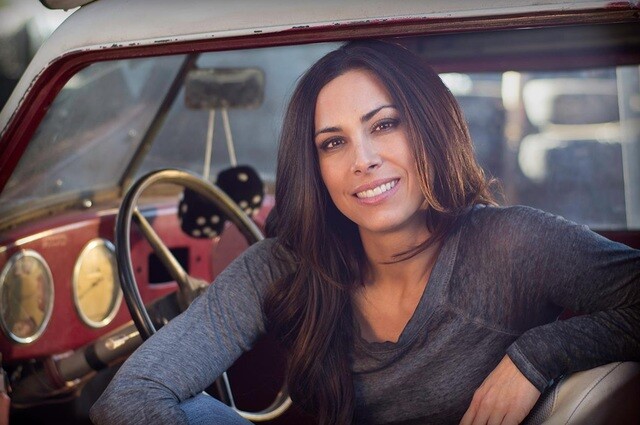
Once the family arrives and the first impression is set, that's generally when Johnson climbs into her 12-foot-tall, 10,000-pound monster truck. Originally, Johnson drove a red 1,475-horsepower behemoth named Tasmanian Devil. Later in her career, Warner Brothers’ selected her to drive their Scooby Doo Monster Jam Truck.
“Now, jumping huge is really hard to describe. There's no sensation like it. I'm driving a 12-foot Scooby Doo truck, and I'm flying through the air. I feel like a superhero in a cartoon,” Johnson told Vice.
Johnson made history the first time she drove into an arena, becoming the first woman to win her debut race, and she has continued making history ever since. In 2011, she won nine titles—more than any rookie or woman has ever won in a single year—and in 2013 she became the first woman to land a backflip in Monster Jam and win the Crash Madness of the Year award.
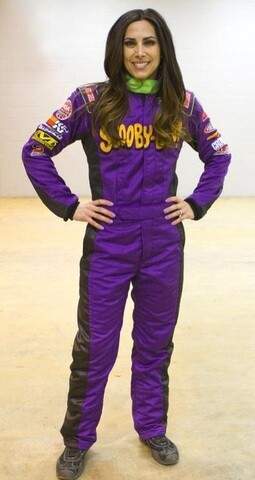
Johnson’s passion for cars came at an early age, when she would spend her weekends and summers with her dad under the hood of a car in Hawaii.
Johnson learned about the Church from a friend in California and became the only person to convert to the Church from her family before she attended college at Brigham Young University and married a returned missionary at age 19. Another car enthusiast, Johnson’s husband helped fuel her passion as the two would go camping and four wheeling, eventually getting into rock-crawling competitions—something that landed them on History Channel’s Modern Marvels and drew the attention of media outlets around the world.
Whether it’s rock-crawling or monster trucks, Johnson makes sure to remain consistent with her faith. "I try and be family-oriented," Johnson told the Deseret News. "I make sure I live the same standards on Sunday as I do the other days of the week. I dress modestly, I'm careful about the way I represent myself — especially in front of children … I always rely a lot on prayer, and I'm not praying to win, I'm praying for safety."
Images of Nicole Johnson by Tkarlnidraj from Wikimedia Commons
Dale Murphy
With two National League Most Valuable Player Awards, four Silver Slugger Awards, and five Gold Glove Awards, no wonder Hank Aaron called Latter-day Saint Dale Murphy the "best all-around player in either league, probably the most valuable player in baseball right now."
While playing in the minor leagues in Greenwood, South Carolina,Dale Murphy was introduced to the gospel by a teammate, Barry Bonnell. A player with high standards, the values of the Church appealed to Murphy and he got baptized early in his baseball career.
After joining the Church, Murphy remained true to his beliefs regardless of what team he played for or what opportunities came up. As a 1983 Sports Illustrated cover story noted, “Here’s a guy who doesn’t drink, smoke, chew or cuss. Here’s a guy who has time for everyone, a guy who’s slow to anger and eager to please, a guy whose agent’s name is Church.”
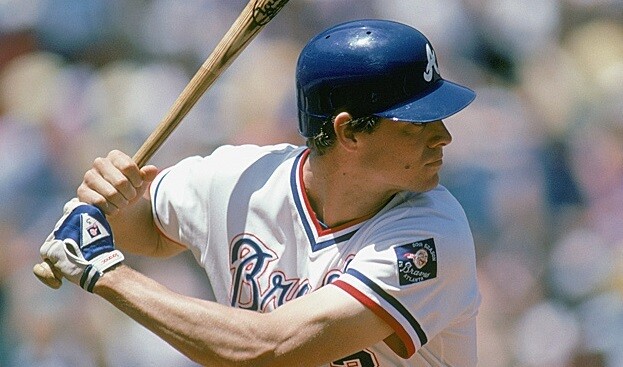
Image from cbssports.com.
Just a year after his baptism, Dale Murphy wanted to serve a mission. "But several local Church leaders felt he could do a greater missionary work in baseball and encouraged him to remain," a 1985 Ensign article states.
An official missionary call wouldn't come for another 12 years however, when Murphy and his wife, Nancy, were called to preside over the Boston Massachusetts Mission.
In the meantime, he wrote a column for youth in the Atlantic Journal-Constitution, something that allowed him to share some of his cherished beliefs. "I’d like to help [kids] understand that our bodies are sacred, that we have more freedom to think and walk and talk if we keep ourselves clean—in mind and body," Murphy told the Ensign.
Krešimir Ćosić
Standing at an incredible 6 feet 11 inches, Krešimir Ćosić was made for basketball. Born in Zadar, Yugoslavia (now Croatia), on November 26, 1948, Ćosić began playing on his national team at 16 and won two world championships and three European championships during his lifetime. He also competed in four Games, earning three Olympic medals.
After helping Yugoslavia secure a silver medal during his first Olympic appearance in 1968, Ćosić was persuaded, with the help of BYU’s head basketball coach, Stan Watts, to attend Brigham Young University.
When he first arrived on BYU’s campus, rimmed with the jagged, imperial Wasatch Mountains, Ćosić experienced a strange case of déjà vu. Having seen those exact mountains in his dreams years earlier, Ćosić felt he was meant to come to Provo.
Later, when his friends explained that dreams can have profound spiritual meaning, Ćosić wanted to know more.
► You'll also like: Convert & Track Star Beats Olympians, Sets Records 6 Months After Mission
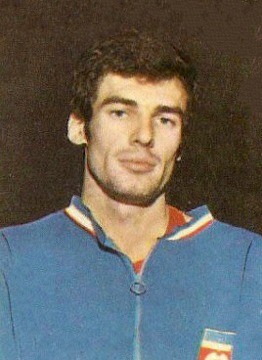
That desire led Ćosić to the office of professor Hugh Nibley. Though separated by age, nationality, and 16 inches (Nibley was only 5 feet 7 inches), the two quickly found a strong brotherhood in their faith and desire for gospel learning.
“There are a hundred reasons why I should not join the Church,” Ćosić told Nibley, “and only one reason why I should—because it is true.”
Krešimir Ćosić was baptized by Nibley in November 1971. Because of his height, he used a specially-sewn, extra-long baptismal outfit, and because of his high public profile and unusual political situation, Ćosić was baptized in the basement of the tabernacle on Temple Square.
After his conversion, Ćosić went on to play in the 1972 Olympic Games in Munich. In the Montreal 1976 Games, he helped his team bring home a silver medal. During his final Olympic appearance, in the Moscow 1980 Games, his team at last brought home a gold medal.
Despite the fame and glory brought on by his meteoric career, Ćosić still remained faithful to the beliefs he learned at BYU. At a time when priesthood leaders were not allowed to preach in Yugoslavia, 23-year-old Ćosić became the presiding priesthood holder in his country and helped lay the foundation for the gospel.
Under direction from the Church, he organized the first three branches and performed the first baptisms in Yugoslavia, translated for Thomas S. Monson when he opened Croatia for the preaching of the gospel in 1985, and assisted in the translation of the Book of Mormon, Doctrine and Covenants, Pearl of Great Price, and the temple endowment into Croatian.
At Ćosić's funeral, a prominent Catholic priest, Fra Bonaventura Duda, shared this tribute:
“Our Kreso, ever since I have known him, was a faithful believer, but he did not (merely) speak of it, he performed his faith. . . . He did not only believe in this religion, he truly believed in a personal connection with God. He wholeheartedly tried to practice his faith in real life.”
Image from Wikimedia Commons
Ambrose Gaines IV
Ambrose Gaines IV, better known by his friends as "Rowdy," was one of the world’s fastest swimmers in the 1980s.
A 22-time NCAA All-American who broke several world records from 1978 to 1984, no one would guess Gaines had a rough time with sports as a boy—that is, until he tried swimming as a junior in high school.
In the 1980 Moscow Olympics, Gaines was predicted to win no less than five gold medals up until the United States decided to boycott the Olympic Games.
Thinking his Olympic run was over, Gaines retired shortly after graduating from Auburn in 1981. But when Gaines’s father encouraged him to keep swimming, he recommitted himself to the sport, and within a year he broke his own world record in the 200m freestyle at the World Championships.
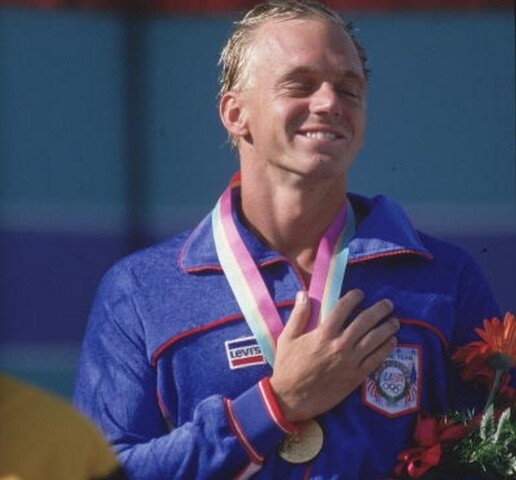
Image from Getty Images
At the 1984 Los Angeles Olympic Games, Gaines returned to the spotlight, winning three gold medals—the most of any swimmer that year. But Gaines didn’t keep the glory for himself. Instead, he gave away each of his medals: one to his coach, one to his dad, and one to his mom.
In 1989, Gaines met and married Judy Zachea, a convert to the Church who was not active at the time. The two had just begun building their new family together when, in 1991, Gaines struggled with unexpected health problems. He was diagnosed with Guillain-Barre Syndrome, a rare disorder where the body’s immune system begins attacking the nerves. Weakness, tingling, and eventual paralysis are common symptoms.
Around the time of his diagnosis, a Latter-day Saint friend invited the Gaines family to attend church. Soon after his recovery, Rowdy and Judy took them up on their offer and began attending church with their family.
His daughter was the first to be baptized in 1998. According to the Church News, Gaines spoke at her baptism about the gift of the Holy Ghost. “He said, 'Madison, one thing I cannot buy for you is the gift of the Holy Ghost,'” Judy recalled. “Then he got choked up and couldn't speak. The Spirit was so incredibly strong."
Just two weeks later, Gaines joined his daughter and was also baptized a member of the Church.
Thanks to his incredible fitness, determination, and newfound faith, Gaines was eventually able to make a full recovery from his disorder. In fact, in 2011 he broke yet another world record at the Masters for the 50-54 age group in the 100m free.
Now ranked as the most experienced television swimming analyst, Gaines makes frequent appearances as a commentator during the Olympics.
But, when asked what his proudest accomplishment is, this father of four girls told the Church News: “There's no comparison. It doesn't even measure on a Richter Scale . . . A gold medal is worthless compared to the love I feel for my family. It may sound corny, but it's true."
Daniel Eugene "Rudy" Ruettiger
Most people know the story of Daniel Eugene "Rudy" Ruettiger from the classic Hollywood movie Rudy.
While the movie captures Ruettiger's tenacious battle to become a football player for Notre Dame's Fighting Irish, it shows little of his life after college, including his spiritual journey of becoming a member of The Church of Jesus Christ of Latter-day Saints.
When Ruettiger first became exposed to the Church, he was doing something quite ordinary: preparing to watch a Notre Dame football game.
Several years ago, BYU Coach Bronco Mendenhall invited Ruettiger, now in his 60s, to attend a fireside the night before Ruettiger's Fighting Irish took on the BYU Cougars. Despite growing up attending Catholic schools and rooting for a Catholic college team, Ruettiger was impressed by the testimony of the football players from this Latter-day Saint school and he began asking questions, wanting to know more. "The Spirit touched his heart and he knew where he needed to be," a Facebook post by United Latter-day Saints shares.
That initial curiosity soon grew within Ruettiger as he continued to investigate the Church, and on January 21, 2017, Rudy Ruettiger was baptized a member of The Church of Jesus Christ of Latter-day Saints.
With this new chapter in Ruettiger's life, the inspiring story of Rudy continues to show how one man went against all the odds to obtain his dreams.
As a young boy, Ruettiger battled dyslexia, something he didn't discover until attending Holy Cross College. It took four attempts before Ruettiger finally got accepted into Notre Dame, where he hoped to play on the football team.
But at 5'6" and 165 pounds, the possibility of Ruettiger becoming a Fighting Irish football player was minuscule. That never deterred Ruettiger, who worked many long, grueling hours to make it onto the Notre Dame scout team.
During his last chance to play at a home game, Ruettiger's coach, Dan Devine, had him dress and play in one of the last plays of the game as a defensive end. With just 27 seconds left on the clock, Ruettiger sacked Georgia Tech's quarterback in one of the most memorable underdog stories in football history. After the game, Ruettiger's teammates carried him off the field, making him one of the only players in Notre Dame history to be carried off the football field.
In honor of Ruettiger, the College Football Rudy Award is now awarded to football players who show character, courage, contribution, and commitment on the field.
Billy Casper
With 51 PGA Tour wins (which places him seventh on the list of all-time winners), two U.S. Opens and a Masters, and 23 holes-in-one, no wonder Billy Casper made it into the World Golf Hall of Fame in 1978 and the PGA Hall of Fame in 1982. Oh, and did I mention he received two PGA Player of the Year awards, he played for the United States in eight Ryder Cup tournaments—where he logged 23.5 points, still the best for an American player—he won the Vardon Trophy for lowest scoring average five times—second only to Tiger Woods—and he became the second golfer ever to bank $1 million in tour earnings?
Billy Casper’s fame ventures into the realm of legend. So how did this golf champion become a Latter-day Saint?
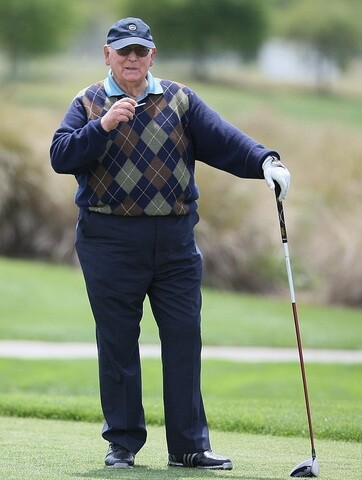
In his autobiography, The Big Three and Me, Casper explains that he came into contact with the Church frequently as he traveled to Utah for tournaments. Once, while on a fishing trip with his friend Don Collett in the Wasatch Mountains, he met Deseret News sports editor Hack Miller. A regular friendship quickly developed between Hack and Casper, and Casper’s wife, Shirley, regularly asked Hack questions about his faith.
While on a trip to the Hawaiian Open, the Caspers stopped by the Church-owned Polynesian Cultural Center and the temple. In his autobiography, Casper ironically writes, “We sat on the steps of the nearby Mormon temple and I asked my friend Wally Dill to take a picture of us, joking that it was as close as we'd ever get to being Mormons.”
But Casper’s run-ins with the "Mormons" were far from over. He continues:
“[W]herever we went it seemed we couldn't avoid something associated with the Church and its members. Soon after we returned to San Diego, Shirley was invited to a political function where George Romney (Mitt's father) . . . . The Romneys captivated Shirley with their poise, style and candor—and they were Mormon. Afterward she asked Cliff Wallace, a San Diego lawyer whom she knew to be some sort of local Mormon leader . . . if he might have the phone number for the full-time missionaries.
“You do not have to ask a Mormon such a thing twice.”
On mormon.org, Casper shared more of his conversion story:
“At the height of my career I joined The Church of Jesus Christ of Latter-day Saints. On New Year’s Day 1966 I was baptized along with my wife, Shirley, and two of our children who were of baptismal age. My membership in the church has factored into everything that has transpired in my life since. All 11 of our children—five are adopted—were baptized into the Church and it remains the center of our life. . . .
“It is the gospel's eternal perspective that gives my life security and meaning, and why I am so eager to share that message with others.”
As he traveled the world breaking records, Casper continued to share the gospel with others, adding, “I have spent my life trying to be true to that call, an at-large missionary to the world. The gospel is my most precious possession and wherever I go I look for opportunities to touch people's lives with its eternal message.”
Image by Keith Allison via Wikimedia Commons
Mark Schultz
“One of the greatest, if not the greatest, all-around athletes that has ever participated in the sport of wrestling. As wrestling machines go, his design is close to perfect."
That's how 16-time National Wrestling Champion Wayne Baughman described Mark Schultz. Born October 26, 1960, in Pala Alto, California, Schultz was the second son born to Dorothy and Philip Schultz. His older brother, Dave, was just 17 months older than him.
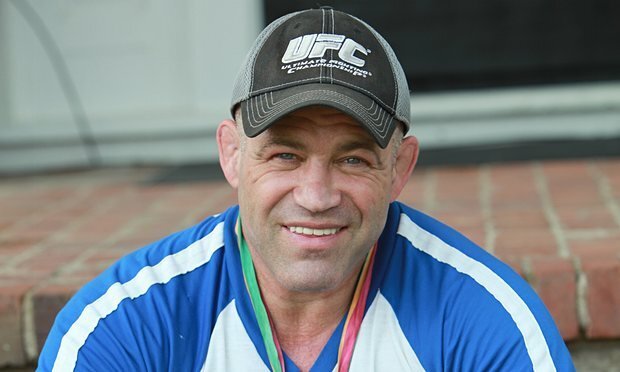
Image from The Guardian
Growing up, Schultz was an all-around athlete, setting 20 school records. As a sophomore in high school, he became the Northern California All-Around Gymnastics Champion. However, Schultz followed in his big brother's footsteps, taking up wrestling in his junior year.
Though his brother, Dave, won the state, national, and international titles in his senior year, Mark had a mediocre first year of wrestling. However, Shultz's skill improved, and as a senior he won the state title.
In college, Dave and Mark teamed up together to train which greatly improved Mark's skill, allowing him to win three NCAA Championships. The Schultz brothers became the most-winning brother combination in American history when it came to NCAA, US Open, World, and Olympic titles. They also became the only American brothers to win World Championship and Olympic gold medals.
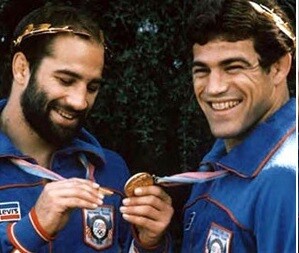
Dave won the 1983 World Championship and brought home an Olympic gold medal for the 1984 Games. Mark won his Olympic gold the same year, 1984, and the World Championships in 1985 and 1987. He retired from wrestling after placing sixth in the 1988 Olympic Games.
In 1991, Mark Schultz began working as BYU's assistant wrestling coach, eventually working his way up to head coach. Once a staunch opponent to the Church, Schultz began changing his mind when he became exposed to its values and its members, becoming baptized in 1981.
Life seemed to be going well, until, while training for a second Olympic bid in 1996, Dave Schultz was unexpectedly murdered by John E. Du Pont in his home at Foxcatcher Farm.
At the time, Mark, who was the head coach of BYU's wrestling team, found comfort and forgiveness in his new faith. "I believe in life after death. I believe in eternal life. I believe Dave is alive," he told Times Union. “My anger over time has turned to pity and my pity has turned into compassion for John,” he told The Guardian. “I feel like I’ve gotten to understand him better, as odd as that sounds about a man who murdered my brother. I can forgive him.”
As difficult as it was, Mark decided he needed to let go of revenge and continue living his life. Just four months after Dave's death, Mark competed in the Ultimate Fighting Competition IX, winning $50,000 and the competition.
The emotional and exciting details of Mark Schultz's life caught the attention of Academy Award Nominated Director Bennett Miller, who captured it in the film Foxcatcher starring Channing Tatum as Mark Schultz, Mark Ruffalo as Dave, and Steve Carell as John E. Du Pont.
Image of Mark and Dave Schultz from historyvshollywood.com
Andy Reid
After coaching in the NFL for 25 years, there’s no doubt Andy Reid has made his imprint on professional football.
Now the head coach of the Kansas City Chiefs, Reid was the Philadelphia Eagles’ head coach for 13 years, during which time he led his team to a super bowl and five NFC championship games.
But while football is an integral part of Reid’s life, so is his faith.
Though not a member of the Church in 1978, Reid decided to attend Brigham Young University. "I went there for a great education and to play football," he told the Deseret News. However, Reid found much more than he was expecting.
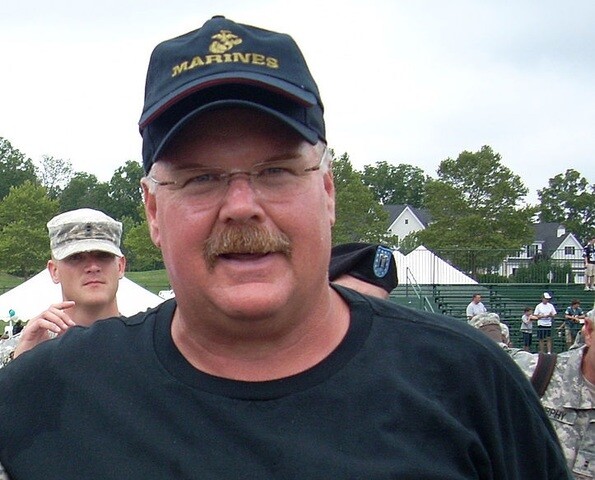
Image by SRA Moses Ross from Wikimedia Commons
The more Reid learned about the gospel, the more he liked it. He liked the Church's focus on family, he liked the lifestyle its values promoted, he liked the message of the gospel, and he also liked a Latter-day Saint girl named Tammy he met in one of his classes.
Eventually, Reid’s interest in Latter-day Saint beliefs led him to become a member of the Church and marry that Latter-day Saint girl he fell in love with at BYU. Since that time, Reid has become an advocate for Latter-day Saints and a devout member. Before the Philadelphia Pennsylvania Temple was dedicated by President Henry B. Eyring on September 18, 2016, Reid held a community symposium at a meetinghouse to clear up misconceptions about Latter-day Saints.
“In our church, we try to get out and talk to members of the Church and at the same time, anybody in the community that would like to listen about family, faith, and football,” Reid told Chat Sports. “Those are three of our favorite subjects and we just try to share our experiences with people.”
Reid’s wife, Tammy, adds, “We do have this huge faith and we like to share it, because it’s made our lives better and it makes our lives richer.”
Jonah Lomu
When Jonah Lomu stepped onto the All Blacks New Zealand national rugby team in 1994, he was only 19 years old, making him the youngest player to ever have played for the team. It didn’t take long for Lomu to make a name for himself, becoming the first international rugby superstar. In 2007, Lomu was inducted into the International Rugby Hall of Fame and then the World Rugby Hall of Fame in 2011.
After playing professional rugby for 13 years, Lomu retired in 2007 and soon after began a new battle—one for his health.
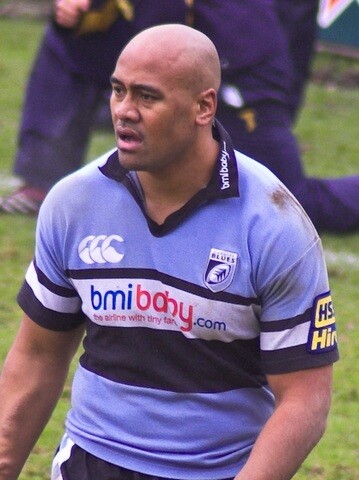
While battling nephrotic syndrome, a kidney disorder that causes your body to excrete too much protein, Lomu began to find comfort in Latter-day Saint doctrines. The missionaries that taught Lomu and his family were able to answer the questions he had been struggling with for years, leading Lomu and his wife, Nadene, to know the Church was where they were supposed to be.
Lomu was baptized a member of the Church in 2012 at 37 years old.
Three years later, at the end of 2015, Lomu passed away at 40 years old, sending shock waves throughout the rugby community. Among those that sent their condolences to Lomu’s family were Queen Elizabeth, David Beckham, Morgan Freeman, and Elton John.
"Jonah, you were a freak on the field and a gentle, caring giant off it," former All Blacks coach John Hart said during a memorial service.
To highlight this fact about Lomu’s character, New Zealand Prime Minister John Key shared a story following Lomu and his team’s loss to France in the 1999 World Cup. "Despite his deep disappointment, Jonah remained on the field until he'd shaken the hand of every single French player," he said, according to ESPN. "More often than not, he was also the last player standing on the sideline signing autographs for young fans. That was Jonah."
Image by Russell J Watkins via Wikimedia Commons
Antje Misersky Harvey
Antje Misersky grew up behind the Iron Curtain as an East German cross-country skier.
When the German national cross-country team kicked her off the roster for refusing to take steroids, Misersky’s family became a target of government scrutiny and the teenager thought her Olympic dreams were dashed.
That is until she discovered the biathlon, an event that not only took her to the Olympics but also led her to her future husband.
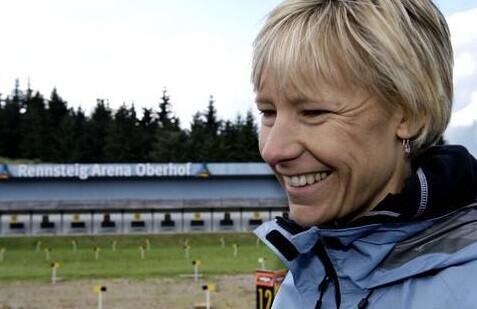
Image from thueringer-allgemeine.de
Three years after the Berlin Wall fell, Misersky competed in the 1992 Albertville Winter Olympics, earning one gold medal in the 15 km race and silvers for the 7.5 km sprint and 3 x 7.5 km relay. During this time, she and her father—a former head ski coach in East Germany who was fired when he refused to give his athletes steroids—spoke out against the East German team’s history of doping, something that garnered both respect and notoriety as well as death threats and an unpopularity in East Germany.
During the 1991-92 Biathlon World Cup in Ruhpolding, Germany, Misersky met American biathlete Ian Harvey, and the two were married 15 months later.
In 1994, Antje Misersky Harvey appeared in the 1994 Lillehammer Winter Olympics, this time bringing home a silver for the 4 x 7.5 km relay.
After the birth of her two daughters, Hazel and Pearl, Antje began suffering from hyperthyroidism. During this time, a neighbor tried to help Antje by teaching her about the Atonement. Soon after, Ian and Antje began reading the Book of Mormon together and later were baptized as members of the Church.
In 2012, Antje and her father were inducted into the Hall of Fame of German Sports.
Ty Detmer
A Heisman Trophy winner in 1990, a two-time All-American, and a NCAA record-setter, Ty Detmer made quite a name for himself even before his 12 years playing in the NFL.
Having grown up as a Methodist in Texas, Ty Detmer feels that his decision to attend Brigham Young University didn’t occur by happenstance. “Starting to put Heavenly Father in the forefront [during high school] was a big step for me, and I really feel like I was guided to BYU,” he told the Deseret News. “I really feel like there was a path for me, and making good decisions opened that door for me.”
Between his roommate, Eric Mortensen, and his girlfriend, Kim Herbert, Detmer became regularly exposed to Latter-day Saint beliefs. Eventually, Herbert asked Detmer if he would consider taking missionary discussions. He agreed, but only if Herbert was willing to take “Methodist discussions.”

Image from USA Today
The two began alternating going to church with Latter-day Saints and Methodists until Detmer decided he did want to meet with the missionaries. Detmer was baptized on February 2, 1991, just two months after winning the Heisman. He and Kim Herbert were sealed in the Salt Lake Temple by President Thomas S. Monson later that same year.
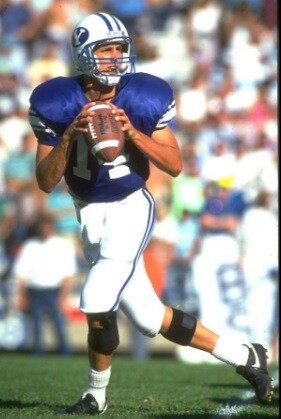
“It was really a pretty easy conversion because it was all the things that I wanted,” Detmer told Deseret News. “I wanted the opportunity to administer to my family, to have eternal marriage, to be able to be sealed in the temple. Those are all things that I thought, ‘That’s the way it should be.’ That’s what I grew up believing.”
When difficult moments later arose in Detmer’s life and his career, he remained grateful for the role the Church played in his life: “To have that backbone so that as we go through life, we can turn to our Heavenly Father and know that it’s not always going to be perfect, but I know that Jesus Christ is our Savior and through repentance, it doesn’t matter where I start. It’s where I end up and how I do things going forward and how I react to things.”
Image from mysanantonio.com
